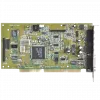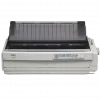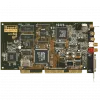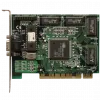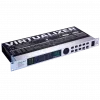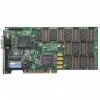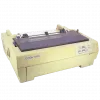Windows 3.1x is a series of 16-bit operating systems produced by Microsoft for use on personal computers. The series began with Windows 3.1, which was first sold during March 1992 as a successor to Windows 3.0. Further editions were released between 1992 and 1994 until the series was superseded by Windows 95.
Windows 3.1 (originally codenamed Janus, of which two betas were published), released on April 6, 1992, includes a TrueType font system (and a set of highly legible fonts), which effectively made Windows a viable desktop publishing platform for the first time. Similar functionality was available for Windows 3.0 through the Adobe Type Manager (ATM) font system from Adobe.
Windows 3.1 was designed to have backward compatibility with older Windows platforms. As with Windows 3.0, version 3.1 had File Manager and Program Manager, but unlike all previous versions, Windows 3.1 and later support 32-bit disk access, cannot run in real mode, and included Minesweeper instead of Reversi (though Reversi was included in some copies).
Windows 3.1 Multimedia PC Version (Beta only, released Nov 1992 – codenamed Bombay) included a media viewer, and the ability to play video files. It was targeted to the new multimedia PC and included sound and video integration with CD-ROM support.
Windows 3.1 dropped real mode support and required a minimum of a 286 PC with 1MB of RAM to run. The effect of this was to increase system stability over the crash-prone Windows 3.0. Some older features were removed like CGA graphics support (although the Windows 3.0 CGA driver will still work on 3.1) and compatibility with real mode Windows 2.x applications.
Windowed DOS applications (in enhanced mode) gained the ability for users to manipulate menus and other objects in the program using the Windows mouse pointer (provided that the DOS application supported mice). A few DOS applications such as late releases of Microsoft Word can access the Windows Clipboard. Windows' own drivers cannot directly work with DOS applications; hardware such as mice require a DOS driver to be loaded prior to starting Windows.
Icons could be dragged and dropped for the first time in addition to looking more detailed. In 386 enhanced mode, Windows 3.1 can theoretically access up to 4GB of RAM (no single application can use more than 16MB). The File Manager was significantly improved over Windows 3.0. Most significantly, Windows 3.1 added multimedia support for the first time.
Windows 3.1 was the first version of Windows to be distributed on CD-ROM (although this was more common for Windows for Workgroups 3.11, which typically came with DOS 6.22 on one CD) in addition to 720k, 1.2MB, and 1.44 MB floppy distributions. Installed size on the hard disk was between 10 and 15MB.
32-bit disk access (386 enhanced mode only) brought improved performance by using a 32-bit protected mode driver instead of the 16-bit BIOS functions (which necessitate Windows temporarily dropping out of protected mode).
Windows 3.11
On December 31, 1993, Microsoft released an update for Windows 3.1 known as Windows 3.11. Thus, Windows 3.11 is not a standalone version of Windows, but rather a software update from Windows 3.1, much like modern Windows service packs. For those who did not own Windows 3.1, full disk sets of Windows 3.11 were available at the time.


